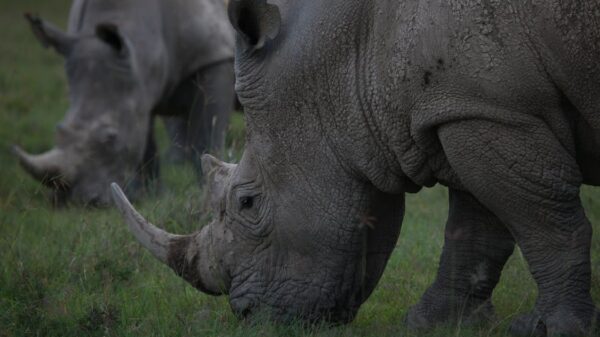From the food we eat to the clothes we wear, animals play a significant role in our Environmental daily lives. However, have you ever stopped to think about the impact our relationship with animals has on the environment? From deforestation and pollution to greenhouse gas emissions, it is undeniable that our actions towards animals have far-reaching consequences for the planet. In this blog post, we will explore how our treatment of animals affects the environment and what steps we can take to reduce its negative impact. Get ready to be enlightened and inspired!
Introduction
Our relationship with animals is one of the most important aspects of our lives. They provide us with food, clothing, shelter, and companionship. However, our relationship with animals also has a significant impact on the environment.
Animal agriculture is a major contributor to greenhouse gas emissions and deforestation. The raising of livestock for meat, dairy, and eggs requires large amounts of land, water, and food. This strain on resources contributes to climate change and loss of habitat for wild animals.
Companion animals also have an environmental impact. The pet industry is a major consumer of resources such as plastic, paper, and metal. Pets also produce waste that can pollute the environment if not properly disposed of.
We can reduce the environmental impact of our relationship with animals by making more sustainable choices in how we care for them. For example, we can choose to eat less meat or buy products from companies that use sustainable practices in their animal agriculture operations. We can also make sure to properly dispose of our pets’ waste and avoid purchasing products made from unsustainable materials.
Exploring the Environmental Impact of Animal Agriculture
Animal agriculture is responsible for a significant amount of environmental damage. The raising of livestock requires land, water, and other resources, and produces greenhouse gas emissions, pollution, and waste.
Animal agriculture is the leading cause of deforestation, water consumption, and species extinction. It is also a major contributor to climate change, as livestock production emits large amounts of greenhouse gases. In addition, animal agriculture pollutes our air and water with manure and other waste products.
The good news is that we can each make a difference by reducing our consumption of animal products. By eating less meat and dairy, we can help to protect the environment and save precious resources.
The Benefits of Plant-Based Diets
There are many benefits to plant-based diets, both for the individual and for the environment.
Plant-based diets have been shown to be beneficial for overall health, including reducing the risk of heart disease, obesity, cancer, and type 2 diabetes. They are also associated with a lower carbon footprint and a smaller water footprint than animal-based diets.
In addition to the health benefits, plant-based diets also have a positive impact on the environment. Animal agriculture is a leading contributor to greenhouse gas emissions, and it requires large amounts of land, water, and other resources. A plant-based diet requires far fewer resources and results in far less pollution.
The Impact of Animal Products on Wildlife
Animal products have a significant impact on wildlife. The meat and dairy industries are responsible for the majority of animal agriculture’s negative environmental impacts, including habitat loss, species extinction, and climate change.
The livestock industry is a leading driver of deforestation, particularly in the Amazon rainforest. Cattle ranching is responsible for 80% of deforestation in the Amazon, and soy production – largely for animal feed – is responsible for another 20%. This destruction of natural habitats contributes to species loss; it is estimated that up to 137 plant, animal, and insect species are lost each day due to rainforest destruction.
The livestock industry is also a major contributor to climate change. Animal agriculture accounts for 18% of global greenhouse gas emissions – more than the entire transportation sector. The majority of these emissions come from cattle and other grazing animals, which release methane – a potent greenhouse gas – through their digestion. Animal agriculture also contributes to land and water degradation, pollution, and overuse of resources such as water and fossil fuels.
Our growing demand for animal products is having a significant impact on wildlife all over the world. To protect the environment and the many species that call it home, we need to reduce our reliance on animal products.
What Can We Do?
Humans have had a long and complicated relationship with animals. For centuries, we have used them for food, clothing, labor, and companionship. But as our population has grown and our impact on the environment has increased, so has our demand for animal products. The result is that today, more than ever before, the way we treat animals is having a profound impact on the planet.
The good news is that there are things we can do to reduce the environmental impact of our relationship with animals. Here are just a few:
1. Eat less meat: Meat production is a major source of greenhouse gas emissions and deforestation. If everyone in the US reduced their meat consumption by just 10%, it would be the equivalent of taking 12 million cars off the road!
2. Choose sustainable seafood: Overfishing is a major problem worldwide, and it’s having a devastating effect on ocean ecosystems. When you buy seafood, look for options that are certified sustainable by organizations like the Marine Stewardship Council.
3. Buy humanely raised products: Factory farming is cruel to animals and bad for the environment. When possible, choose animal products from farmers who raise their animals humanely and allow them to roam freely outdoors.
4. Support wildlife conservation: Habitat loss is one of the biggest threats to wildlife populations round the world. You can help by supporting organizations that work to protect natural habitats and promote sustainable land use practices.
Conclusion
The relationship between humans and animals has a profound impact on the environment. While there are many ways to reduce our environmental footprint, such as reducing meat consumption or choosing sustainable sources of animal products, it is important to remember that we should also work towards improving the welfare of the animals themselves in order to reduce their negative impacts on the planet. By making conscious choices about our purchasing habits, we can help ensure that our relationship with animals remains symbiotic rather than exploitative.










